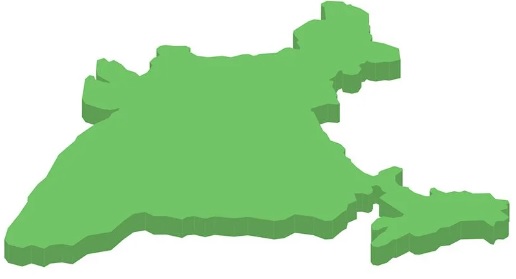What is a MUDRA Loan?
The
Micro Units Development and Refinance Agency (MUDRA) loan is a government-backed initiative aimed at providing financial support to micro and small enterprises in India. Launched in April 2015 under the
Pradhan Mantri Mudra Yojana (PMMY), the MUDRA loan scheme seeks to empower entrepreneurs, especially those in the non-corporate, non-farm sector, by facilitating access to affordable and collateral-free credit. The scheme is designed to stimulate the growth of small businesses, improve employment opportunities, and contribute to the overall economic development of India.
In this article, we will explore the key features, eligibility, application process, benefits, and challenges associated with MUDRA loans.
Key Features of MUDRA Loans
- Loan Categories: MUDRA loans are classified into three broad categories based on the loan amount and the type of business:
- Shishu: Loans up to ₹50,000 for early-stage startups or very small businesses.
- Kishore: Loans ranging from ₹50,001 to ₹5 lakh for businesses with a moderate track record or those looking to expand.
- Tarun: Loans ranging from ₹5 lakh to ₹10 lakh for more established businesses with a good financial history and business stability.
- Loan Amount: The MUDRA loan scheme offers loans that range from ₹50,000 to ₹10 lakh, depending on the stage of the business and its growth requirements. The idea behind these loan limits is to address the varied needs of small-scale businesses that require capital for operations, expansion, or modernization.
- Collateral-Free: One of the key features of MUDRA loans is that they are typically collateral-free. This means that businesses do not need to pledge assets like property or machinery to secure the loan. This makes the scheme particularly beneficial for small entrepreneurs who may not have valuable assets to offer as collateral.
- Purpose of the Loan: MUDRA loans can be used for a variety of business needs, such as:
- Working capital requirements
- Purchase of machinery or equipment
- Expansion of business operations
- Upgradation of technology
- Inventory purchase
- Marketing and branding activities
Essentially, MUDRA loans are designed to meet the financial requirements of micro and small enterprises to foster their growth.
- Affordable Interest Rates: The interest rates for MUDRA loans are competitive and generally range from 7% to 10% per annum. The rates are decided by the lending institutions, but they are typically lower compared to other forms of unsecured loans in the market.
- Repayment Terms: The repayment tenure for MUDRA loans can vary based on the loan amount and the business’s cash flow. Generally, the repayment period ranges from 3 to 5 years. The repayment terms are designed to be flexible, taking into consideration the cash flow cycles of small businesses.
- Government Support: MUDRA loans are supported by the Government of India, which provides refinancing to the banks and financial institutions that disburse these loans. This support helps to reduce the risk for lending institutions, thereby encouraging them to lend to small businesses that might otherwise be considered high-risk borrowers.
- Eligibility: MUDRA loans are primarily targeted at small and micro-businesses in the non-corporate, non-farm sector. Eligible applicants include:
- Indian citizens who own or run micro or small businesses
- Entrepreneurs in the manufacturing, services, or trading sectors
- Women entrepreneurs, who are given special priority under the scheme
- Self-employed individuals, such as artisans, shopkeepers, and small traders
Application Process for MUDRA Loans
The process of applying for a MUDRA loan is straightforward and typically involves the following steps:
- Identify the Appropriate Lending Institution: MUDRA loans are available through a wide network of lending institutions, including:
- Scheduled commercial banks
- Regional rural banks (RRBs)
- Microfinance institutions (MFIs)
- Non-Banking Financial Companies (NBFCs)
The applicant needs to identify the financial institution that suits their needs and approach them for a loan application.
- Fill Out the Loan Application: Applicants must fill out a loan application form, providing details about their business, loan requirements, financial history, and other necessary information. The forms are available at the lending institutions, and many institutions also provide the option to apply online.
- Provide Required Documents: Though the MUDRA loan is largely collateral-free, applicants are still required to submit certain documents, which may include:
- Proof of identity (Aadhar card, PAN card, passport)
- Business registration documents (if applicable)
- Financial statements (income statement, balance sheet)
- Bank statements for the last 6 months
- Project report or business plan (for larger loans)
- Loan Approval and Disbursement: Once the application and documentation are reviewed, the lending institution will assess the applicant's eligibility based on factors such as business viability, creditworthiness, and repayment capacity. If approved, the loan amount will be disbursed directly to the applicant’s account.
Benefits of MUDRA Loans
- Financial Inclusion: MUDRA loans are designed to promote financial inclusion by providing small businesses with access to formal credit. Many small entrepreneurs often face difficulty in obtaining loans from traditional banks due to the lack of collateral or formal documentation. MUDRA loans bridge this gap by offering loans to businesses that are typically underserved by the banking sector.
- Encourages Entrepreneurship: By offering collateral-free loans with relatively low interest rates, MUDRA encourages entrepreneurship, especially among young people and women. It has led to the establishment of several new small enterprises across India, contributing to job creation and economic growth.
- Promotes Job Creation: Small businesses play a critical role in job creation, and by supporting them with financial resources, MUDRA loans help generate employment opportunities. This is particularly important in a country like India, where millions of people depend on small businesses for their livelihoods.
- Flexibility in Loan Utilization: MUDRA loans can be used for a variety of purposes, including business expansion, working capital, or upgrading machinery and technology. This flexibility ensures that businesses can use the funds in ways that best suit their specific needs.
- Boosts the Indian Economy: The MUDRA loan scheme contributes to the growth of the Indian economy by fostering the development of small businesses, which are a crucial part of the overall economic structure. As these businesses grow, they contribute to GDP growth, export earnings, and local development.
Challenges of MUDRA Loans
- Risk of Default: Although MUDRA loans are collateral-free, they still carry the risk of default, particularly because many borrowers are from small or unorganized sectors. If borrowers are unable to repay, it can lead to financial strain on lending institutions and potentially harm the broader economy.
- Lack of Financial Literacy: Many small business owners in rural areas may not have sufficient financial literacy to understand the loan terms, repayment schedules, and other aspects of borrowing. This can lead to improper utilization of funds and difficulties in repaying the loan.
- Limited Access to Information: While MUDRA loans are available through many financial institutions, access to information about the scheme may be limited in certain areas. Many entrepreneurs in rural or remote areas may not be aware of how to apply for the loan or may face challenges in completing the application process.
- Inadequate Support for Business Development: While MUDRA loans provide financial assistance, there may be a lack of complementary support in terms of training, mentorship, and market access, which could help borrowers succeed in growing their businesses.
Conclusion
The MUDRA loan scheme is a landmark initiative by the Government of India to support micro and small enterprises, providing them with access to affordable credit without the need for collateral. It has been instrumental in promoting entrepreneurship, job creation, and financial inclusion across the country. While there are challenges associated with the scheme, such as the risk of default and limited access to financial literacy, the benefits far outweigh the obstacles.
For entrepreneurs looking to start or grow a small business, MUDRA loans offer a viable financing option, especially for those who may not have access to traditional forms of credit. With its wide reach and flexible terms, MUDRA loans are helping to shape the future of India’s small business landscape, driving economic growth and job creation.




























